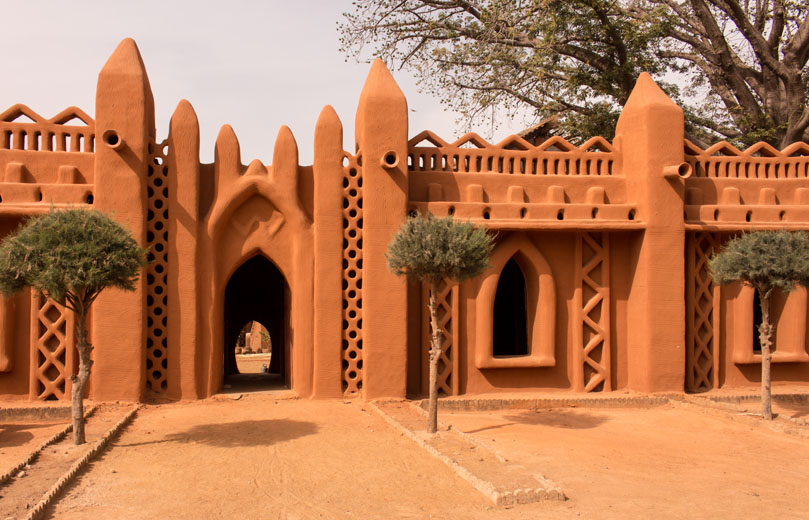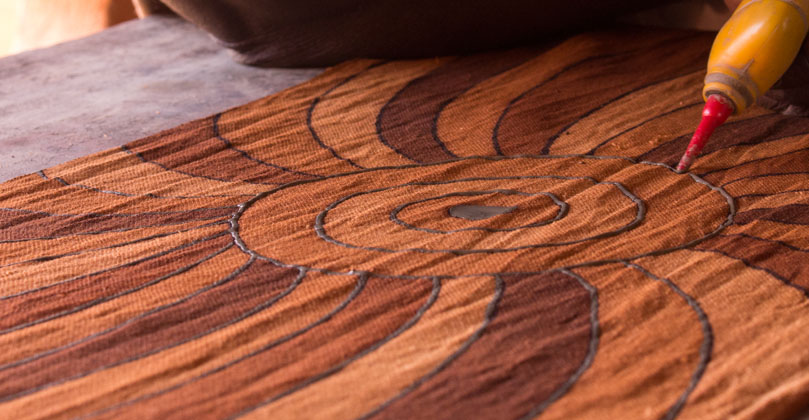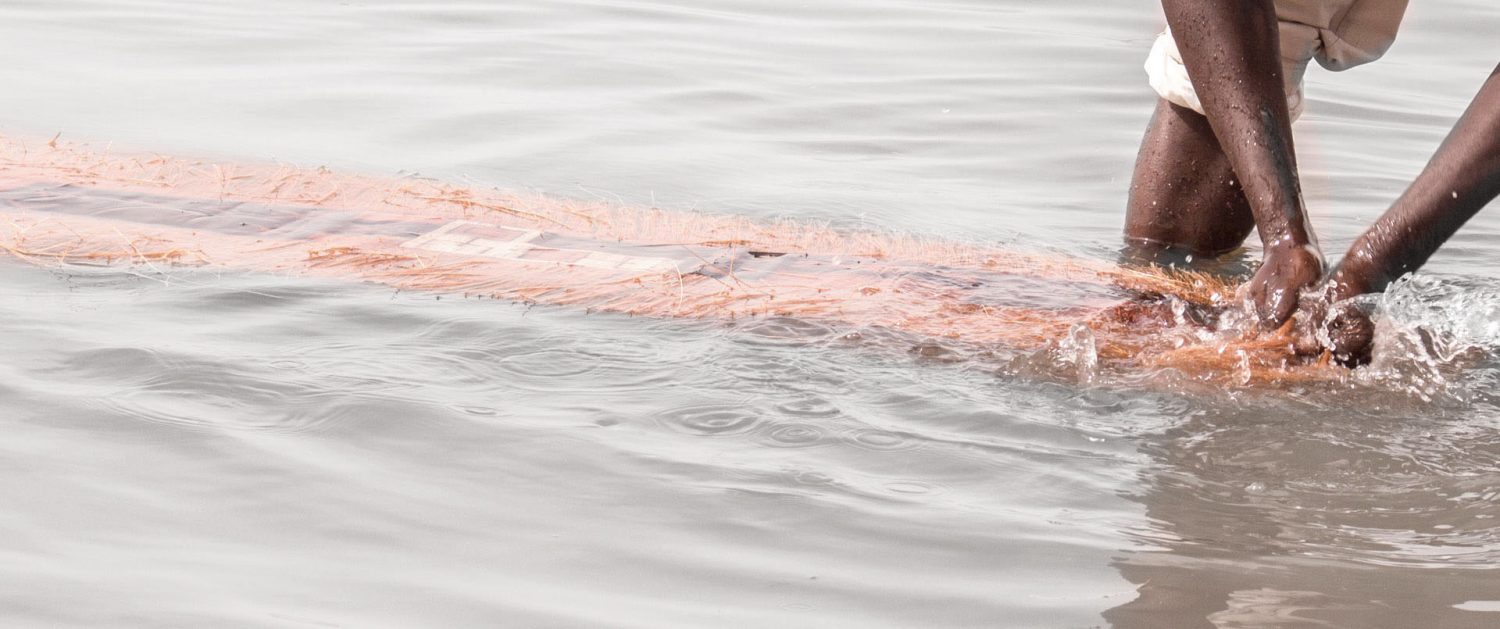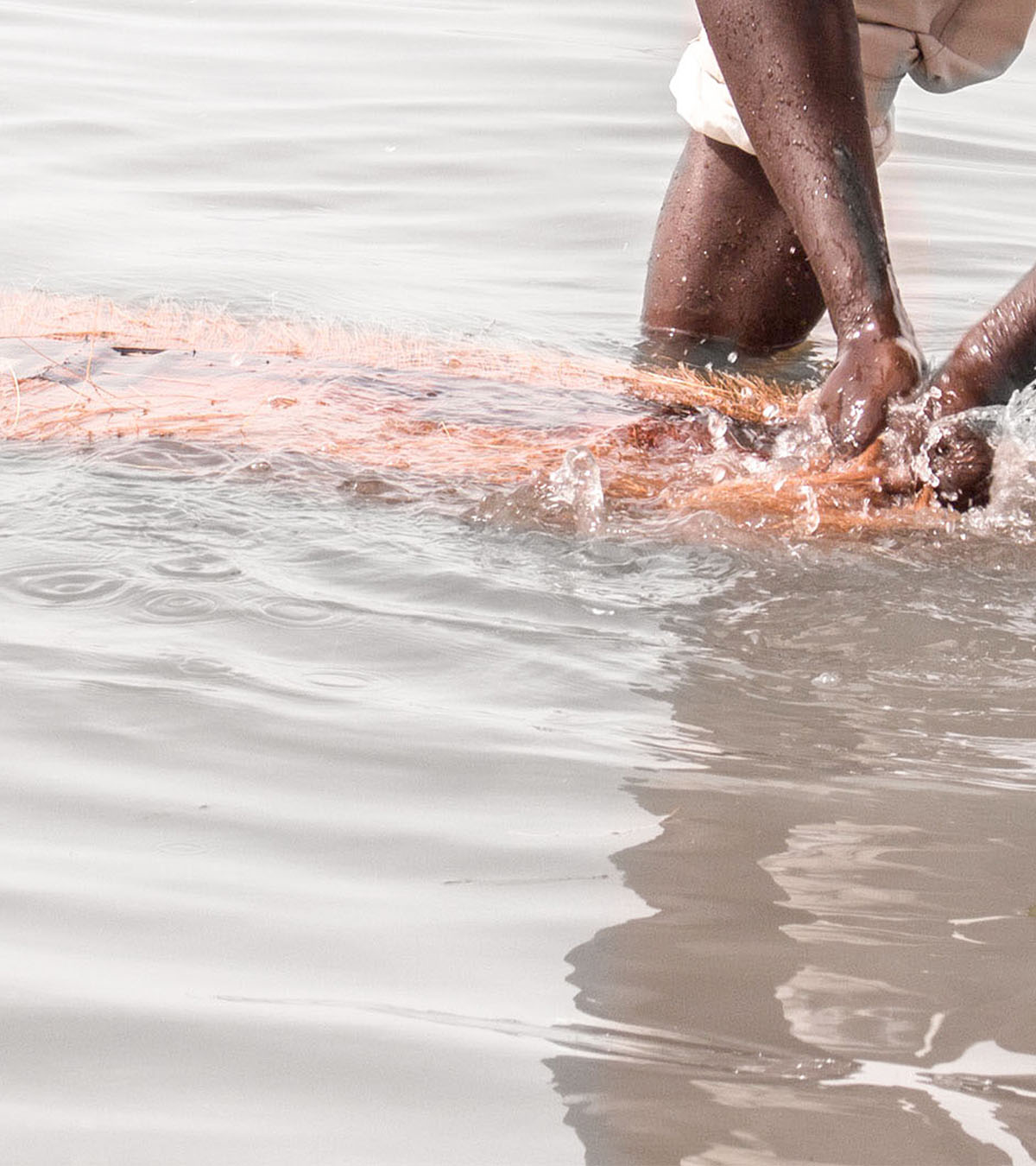Bogolan Story
1 - THE STEP INTO THE EUROPEAN MARKET
Set accents
with Bogolan
The best from all cultures enriches the world. Artful cotton fabrics come from Mali - pure natural products full of aesthetics and expressiveness and made by hand. The bogolan technique is an integral part of Malian culture, but also of modern fashion and interior design. We are convinced: Bogolan fabrics fit into European rooms, they set the often desired accents with their colour and pattern strength. They convey the uniqueness of handicraft - as an antithesis to machine-made products.
New materials like West African raffia come into play. Unseco awarded the combination of cotton with raffia, both dyed in the bogolan technique. The award winner, Malian artist Souleymane Coulibaly, is the partner for our first bogolan collection. All products were created in his studio in the old royal city of Ségou, on hand looms and large tables where the fabrics receive their patterns and colours. We are proud to work with this highly motivated team of artists.


The trust between the actors in Mali and Germany grew over the years. The decision was made to jointly develop a collection that would appeal to customers in Mali and in German-speaking countries. It covers four topics:
NIGHTLY
Black and white graphic
SILVER NIGER
Mud and silver-grey - the colours of the Niger
AFRICAN SAVANNAH
Strong brown tones that go so wonderfully with the trend look: Brass .
SOME KINDS OF GREEN
Green and light natural tones in homage to Mali after the rainy season
2 - THE BOGOLAN DYEING TECHNIQUE
With the colours
of nature
Bogolan, in the Bambara language, refers to the dyeing technique that artists in Mali have used for three centuries to give hand-woven fabrics a distinctive look. The natural dyes used for painting come from leaves and bark of African trees. Mud from the Niger River is applied with brushes, and excess soil is later washed out. The sun dries the fabric and enhances the luminosity of the colours.
Bogolan fini – this is what the results, the artists' finished works, are called. The colouring techniques are based on the use of three basic colours. They are obtained from natural materials and can be mixed in different compositions, so that a spectrum of up to ten colours is possible. If dyeing is done with leaves and bark, the technique is called basilan. If mud is also used, it is called bogolan.


The bark of the N'peku tree (wild grape, lat. Lannéa) with its ingredient tannin provides the first basic colour - orange/brown. Pieces of bark are boiled and a dye decoction is made from them. The second base colour - ochre/yellow - is obtained from dried and ground leaves and flowers of the N'galama tree (lat. Anogeissus leiocarpus). This tree grows only in desert areas, it does not tolerate moisture. Its leaves have been used for many centuries and are still used today for the production of traditional African medicine.
The black - the third basic colour - is provided by the iron oxide-containing mud of the Niger River. When light-coloured cotton comes into contact with it, it turns dark; a fact that hunters made use of many centuries ago. They dyed their light-coloured clothes with mud and were thus better camouflaged in their clothes when hunting. Bogo means mud in the Bambara and Malinke language, the suffix -lan stands for the result. The combination of both gave the dyeing technique its common name of Bogolan.


Mali? Yes, why not. A journalistic business trip in 2009 unexpectedly set in motion a development that took shape only two years later with the founding of the Young Africa Initiative. With the realisation that it is tedious to think about the sense and success of development aid projects, but surprised and inspired by the unique textile art of West Africa and true masters of the bogolan dyeing technique, the initiative went its own way. Among other things, it laid the foundation for economic cooperation among equal partners.
Junges Afrika, run by Vera Dähnert from the beginning, imports products from textile studios in Ségou and sells them in German-speaking countries. The aim is to find sales markets for producers from Mali in Europe. Fair prices and direct contact with the ateliers are a matter of course. Our offer is not only aimed at fashion designers, designers and interior decorators who are interested in working and experimenting with these fabrics - also at those customers who would like to decorate themselves or their homes with a genuine Bogolan work of art.
